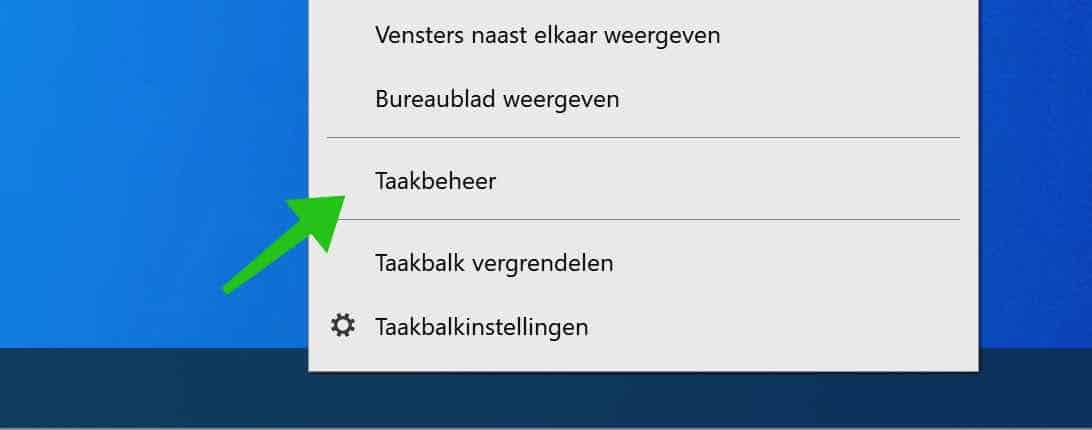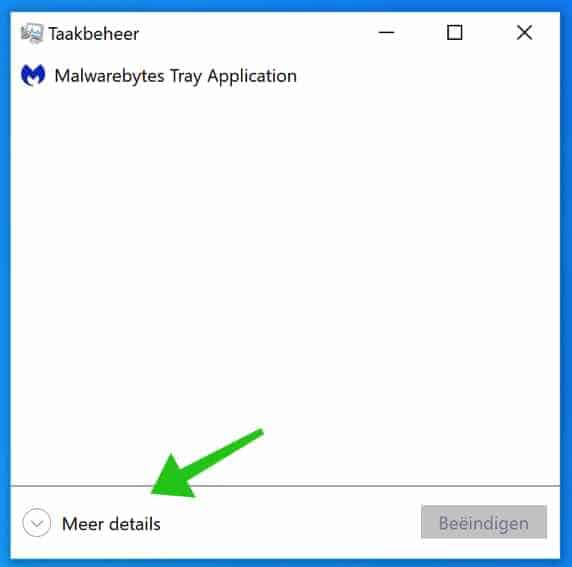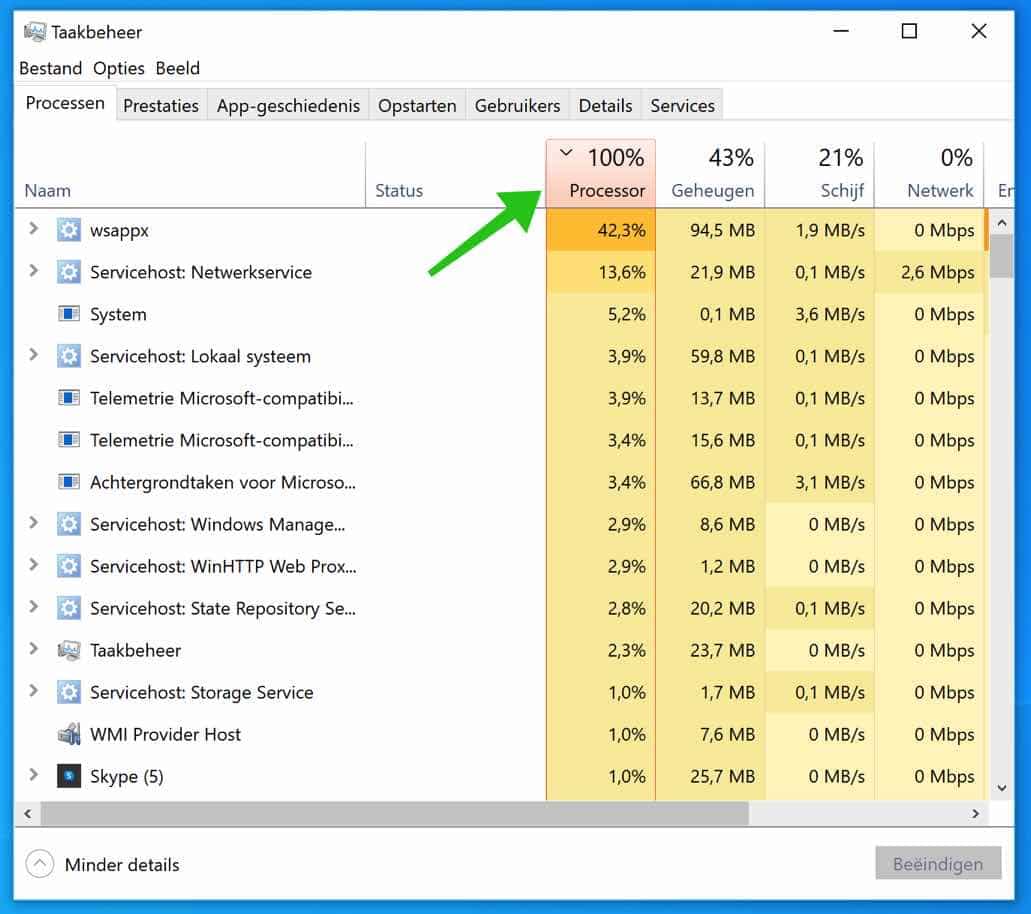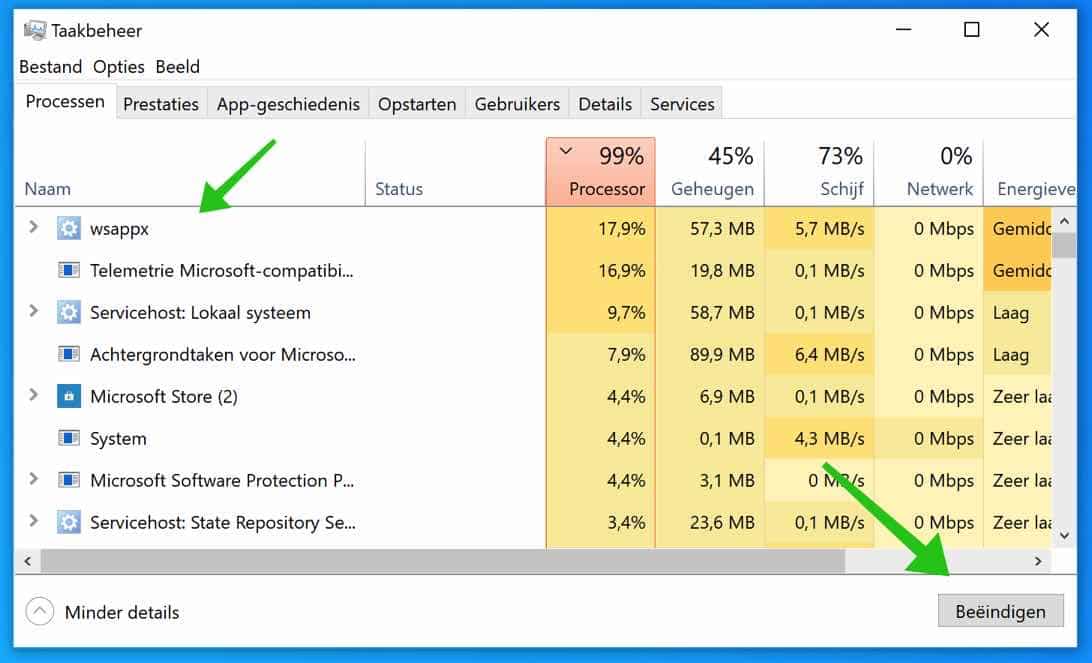Soms heeft Windows 10 last van een applicatie die al het CPU kracht van de computer verbruikt. In sommige gevallen gaat het samen met een ventilator die op hol slaat en andere applicaties of Windows functies die amper tot niet meer reageren.
In dit artikel leg ik u stap voor stap uit hoe u processen die de CPU van uw computer belasten kunt identificeren en wat u eraan kunt doen om dit vertragende proces kunt stoppen.
Welk programma gebruikt al de CPU kracht?
Taakbeheer is het meest voor de hand liggende programma in Windows om applicaties te identificeren die uw Windows computer vertragen.
Meld u dan aan voor onze nieuwsbrief.
Om Taakbeheer te openen, klikt u met de rechtermuisknop op de taakbalk. Selecteer in het menu dat verschijnt Taakbeheer.
(U kunt ook op Ctrl+Alt+Delete drukken en Taakbeheer uit de lijst selecteren).

Als taakbeheer is geopend klik op meer details.

Klik in het gedetaileerde weergave van Taakbeheer op het tabblad “Processor”“.
U ziet een opsomming van alle actieve processen en de CPU kracht in percentages die ze gebruiken in Windows. Processen zijn alle toepassingen of programma’s die op uw computer worden uitgevoerd, inclusief vitale systeemfuncties die op de achtergrond worden uitgevoerd.
Om de processen te sorteren waarbij men de meeste CPU gebruikt, klikt u op de kop van de kolom “Processor”. Het proces waarbij het hoogste percentage van de CPU wordt gebruikt, verschijnt bovenaan de lijst.

Als het proces niet reageert, kunt u ofwel wachten tot een taak is voltooid (als u weet dat het proces actief werkt en niet alleen maar is opgehangen), of u kunt het programma forceren te sluiten.

Om dat te doen, selecteert u de toepassing of de procesnaam in de lijst Naam en klikt u op “Beëindigen”.
Daarna zal het proces worden afgesloten. Als uw Windows computer ineens weer reageert, dan weet u dat het afgesloten proces het probleem was.
Om te bekijken in welke locatie het bestand zich bevind en daarmee nog beter kunt identificeren welk proces het precies is. Klik met de rechtermuisknop op het vertragende CPU proces. Selecteer Bestandslocatie openen uit het menu. U ziet nu precies in welke map het bestand zich bevind.
Als het proces waarbij de CPU wordt geblokkeerd een systeemproces is of een proces dat u niet herkent, kunt u ook proberen uw pc opnieuw op te starten. Onmiddellijk daarna kan het verstandig zijn om een virusscan uit te voeren met Windows Defender of Malwarebytes, voor het geval dat malware het probleem veroorzaakt.
Bedankt voor het lezen. Hulp nodig? Uw kunt het commentaar veld onderaan deze instructie gebruiken voor vragen.

Help mee
Mijn computertips zijn gratis en bedoeld om andere mensen te helpen. Door deze pc-tip te delen op een website of social media, helpt u mij meer mensen te bereiken.Overzicht met computertips
Bekijk ook mijn uitgebreide overzicht met praktische computertips, overzichtelijk gesorteerd per categorie.Computerhulp nodig?
Loopt u vast met uw pc, laptop of software? Stel uw vraag op ons computerforum en krijg gratis computerhulp van ervaren leden en experts.